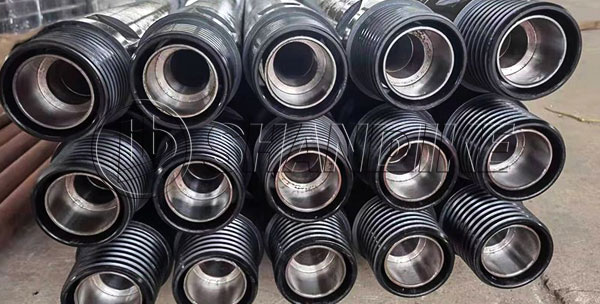Reverse Circulation (RC) Drilling Rods in South Africa
Reverse Circulation (RC) Drilling Rods: Introduction, Characteristics, Applications, and Comparative Analysis
Reverse Circulation (RC) Drilling Rods, also known as double-wall or double-layer drill rods, offer a unique and efficient drilling solution. Here’s a detailed introduction to their structural characteristics, functions, applications, specifications, selection considerations, and a comparative analysis with normal circulation drilling rods.

Structural Characteristics
RC drill rods feature a double-layer structure comprising an inner pipe and an outer pipe. This design creates an annular gap, which serves as a passage for pumping flushing media (like water or mud) to the hole bottom during drilling operations. The inner and outer pipes are connected using specific methods to ensure effective transmission of torque and pressure. The outer tube typically employs threaded connections, while the inner tube often uses a plug-in design with a sealing device at the connection point.
Functions and Applications
The primary function of RC drill rods is to deliver flushing media to the hole bottom via the annular gap. This media cools the drill bit, carries away drilling debris, and maintains hole wall stability. Simultaneously, the inner tube acts as a return conduit for the flushing media and drill cuttings, transporting them back to the surface. RC drill rods are extensively used in geological and mineral exploration, as well as hydrological well drilling. Their efficient and stable drilling performance makes them indispensable for boreholes with diameters of 84mm and 93mm, reaching depths of up to 300m.

Specifications and Parameters
RC drill rods come with varying specifications and parameters depending on the manufacturer and application. Common specifications include outer tube outer diameters (O.D.) ranging from 88.9mm, 101.7mm, to 114.3mm, inner tube inner diameters (I.D.) varying based on the outer diameter and wall thickness (commonly 38.1mm, 50.8mm, and 63.5mm), standardized wall thicknesses for both inner and outer pipes, and customizable lengths to fit drilling requirements (common lengths include 3m, 4.5m, and 6m).
Selection and Purchase
When choosing and purchasing RC drill rods, consider factors such as drilling requirements (including wellbore diameter, drilling depth, and geological conditions), manufacturer reputation (opt for manufacturers with a solid reputation and extensive experience), and price and cost-effectiveness (ensure quality while considering the price factor).

Comparative Analysis with Normal Circulation Drilling Rods
- Circulation Method of Mud or Flushing Fluid
- RC Drilling Rod: Mud or flushing fluid flows down from the annular gap between the outer pipe and the hole wall to the bottom of the hole. After mixing with drilling slag, the mud returns to the surface through the inner pipe, forming a reverse circulation.
- Normal Circulation Drilling Rod: Mud or flushing fluid flows down through the inner cavity of the drill rod to the bottom of the hole. After suspending the mud at the bottom and carrying drilling debris, it returns to the surface through the annular gap between the drill rod and the hole wall, forming a positive circulation.
- Pore Formation Efficiency
- RC Drilling Rod: Drilling debris is quickly carried away by the mud returning through the inner pipe, reducing the possibility of repeated crushing and accidents inside the hole. RC drilling is highly efficient, especially suitable for rapid drilling and stable formations.
- Normal Circulation Drilling Rod: Mud carrying drilling debris back through the annular gap may form a mud film on the borehole wall, which helps protect the wall but reduces borehole formation efficiency. Normal circulation drilling is suitable for projects requiring good wall protection.
- Wall Protection Effect
- RC Drilling Rod: The rapid upward movement of mud after mixing with drilling slag at the bottom of the hole results in a relatively small scouring effect on the hole wall, potentially reducing wall protection compared to normal circulation drilling. Additional wall protection measures may be required in some formations.
- Normal Circulation Drilling Rod: Mud stays in the hole for a longer time and forms a thick mud film on the hole wall, providing good wall protection. Normal circulation drilling is suitable for unstable formations or projects requiring long-term stable borehole walls.

In summary, Reverse Circulation RC Drilling Rods hold significant application potential and market demand in geological and mineral exploration. When selecting and purchasing, comprehensive consideration of factors like drilling needs, manufacturer reputation, and price is crucial to ensure the drill rods meet actual operational requirements.



